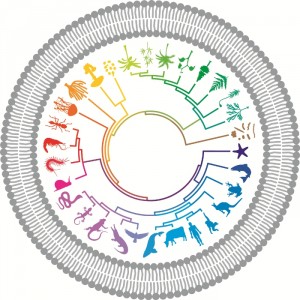
This was the opening question Lewis Wolpert posed at the Royal Society’s conference on Cell Polarity in London on April 15. If you think the answer is obvious, check the end of this blog. The conference, organized by Human Frontier Science Program collaborators Rafael Edgardo Carazo Salas, Attila Csikasz-Nagy and Masamitsu Sato, focused on what regulates cell polarity in the context of the oocyte, Drosophila, C. elegans, the gut, skin and T cells – with the main question of how does a cell break symmetry?
Asymmetric cell division is one answer, but that immediately raises the question of how and where microtubule spindle formation is regulated: we still don’t know how the centrosome knows where to position itself in the cell. We do know that formin 2 is part of the signal bringing chromatin to an asymmetric location in the cortex in the oocyte (Rong Li), and Asako Sugimoto reported that in C. elegans, Aurora A kinase is important for this, but it is not understood why: there is no need for the kinase activity per se.
Once cells are polarized, what drives cell changes? W. James Nelson and Cecile Sykes presented in vitro models to show that tension on cells can cause changes in polarity, and all agreed that it is actin at the leading edge of a polarized cell that causes movement, pushed by a myosin motor at the back. But what triggers polarity: external polarity cues or intrinsic determinants? Several participants spoke on the role of the apical cell determinants for polarity, including the PAR complex (PARs 3 and 6/aPKC/Crumbs), but how other molecular players, for example LGN/Pins, Inscuteable, NuMA/Mud, regulate apical polarity is not yet clear.
What are the consequences of the loss of cellular polarity? Whilst around 85% of cancers arise from epithelial cells, the speakers were divided on whether the cause is loss of polarity triggered by a mis-orientation of spindles or the subsequent loss of the definition of the epithelial monolayer. Daniel St Johnston reported that inducing a mis-orientation of spindles in the follicular epithelium of flies does not produce tumor-like epithelial disruption. But using a mammary transplant model Ian Macara showed that disruption of cell polarity by mislocalization of aPKCs/loss of Par3 and Inscuteable in mammary glands causes epithelial cell disorganization and he believes this will be one of the keys to understanding breast cancer cell metastasis.
Several speakers asked how we can model polarity. Over 60 years ago, Alan Turing proposed a chemical basis for morphogenesis modeled on reaction-diffusion equations, and more than half a century on, Leah Edelstein-Keshet discussed how she had used similar principles, with local perturbation analysis to model cell polarity.
Will the answer to what regulates cell polarity come from mathematical modeling or ingenious experiments? It will almost certainly be both. – Oh, and the answer to Wolpert’s question is: it’s not polarized – if you cut an arrow along its length, there is no difference between one end and another of the bits without the arrowhead.
- Embryonic transformations - 19th January 2015
- Questioning regeneration: answers from Alejandro Sánchez-Alvarado - 29th October 2014
- How do geckos climb? - 15th May 2014
Comments